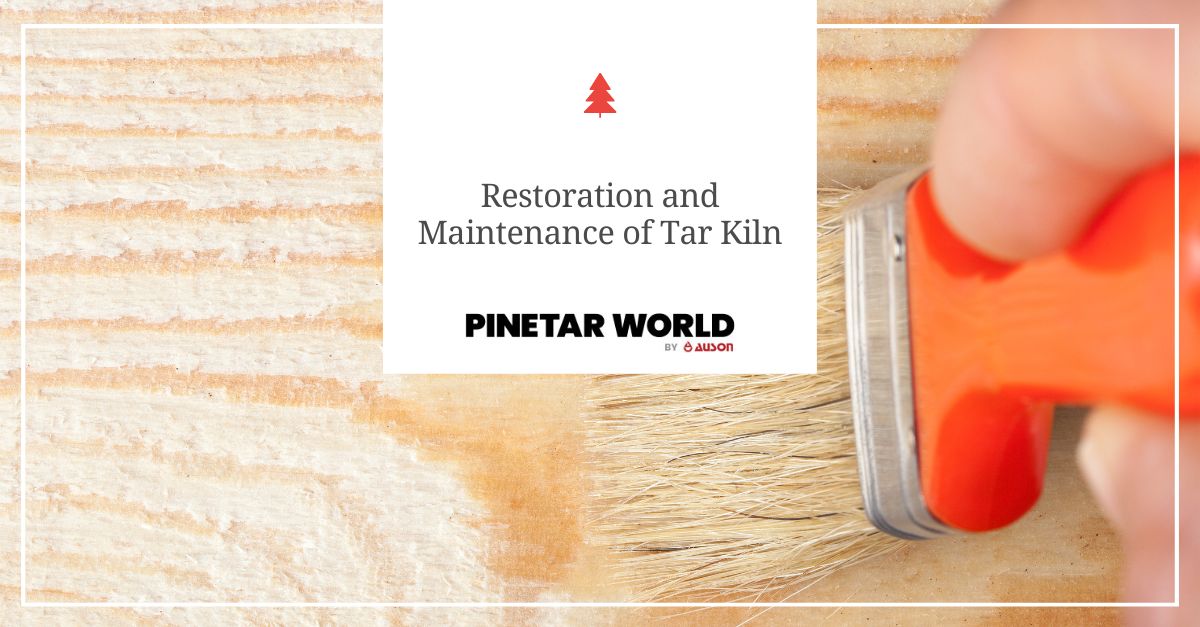Tar kiln, historical relics of an era when wood was indispensable for various applications, are more than just remnants of the past; they are windows into our industrial heritage. Preserving these structures is not only crucial for historical continuity but also for functional use. In this article, we delve into the fascinating world of tar kilns, focusing on their restoration and maintenance, with a special spotlight on the wood protection product known as Pine Tar World.
Understanding Significance
Before delving into the details of their restoration and maintenance, it’s vital to appreciate their significance. These structures were once the heart of industries like shipbuilding, providing the essential substance, tar, used to preserve and protect wooden materials. Their historical value, therefore, cannot be overstated.
The Decay Challenge
Tar kilns, sometimes made of wood themselves, are not immune to the passage of time. Exposure to the elements and neglect can lead to decay. This decay threatens both the historical integrity of these structures and their functionality. Fortunately, there is a solution – restoration.
Restoration: A Labor of Love
Restoring a tar kiln is a meticulous process that requires expertise and dedication. It involves repairing structural damage, replacing worn-out components, and ensuring the kiln is safe and functional. But it doesn’t stop there; the preservation of these treasures also calls for wood protection that can stand the test of time.
The Role of Pine Tar World
Enter Pine Tar World, a leader in wood protection products. With their range of top-quality pine tar products, they play a pivotal role in the restoration and maintenance of tar kilns. Pine tar, a natural substance derived from pine trees, has been used for centuries to protect wood from decay. It’s a tried-and-true method that aligns perfectly with the historical authenticity.
Pine Tar: Nature’s Wood Protector
Pine tar’s efficacy as a wood protector lies in its unique properties. It penetrates deep into wood fibers, forming a water-repellent barrier that shields against decay, insects, and the elements. This natural preservation method not only ensures the longevity of the kiln but also maintains its historical authenticity.
The Restoration Process
When restoring a tar kiln, Pine Tar World’s products come into play during several critical stages:
Cleaning and Preparing
Before applying pine tar, it’s essential to clean the wood thoroughly. Pine Tar World offers wood cleaning products that help remove dirt, grime, and old finishes, ensuring a clean surface for the tar to adhere to.
Tar Application
The application of pine tar is a crucial step in the restoration process. Pine Tar World’s pine tar is easy to apply and deeply penetrates the wood, providing long-lasting protection. It also enhances the natural beauty of the wood, giving the kiln a polished appearance.
Ongoing Maintenance
Maintenance is key to the longevity of a restored tar kiln. Pine Tar World’s wood protection products can be reapplied periodically to ensure continued protection against decay and other threats.
A Sustainable Choice
Beyond its effectiveness, Pine Tar World’s products are environmentally friendly, making them an ideal choice for the preservation of historical structures like tar kilns. Pine tar is a renewable resource, harvested from pine trees without causing harm to the environment.
In the world of heritage preservation, tar kilns hold a special place. These structures not only reflect our industrial history but also serve as functional treasures when well-maintained. The restoration and maintenance, aided by Pine Tar World’s wood protection products, ensure that these historical icons remain intact for generations to come. By using nature’s own protector, pine tar, we not only preserve history but also promote sustainable practices for the future.
Remember, the journey of preserving tar kilns is a labor of love, and with Pine Tar World’s wood protection products, it’s a journey that’s both effective and sustainable.

